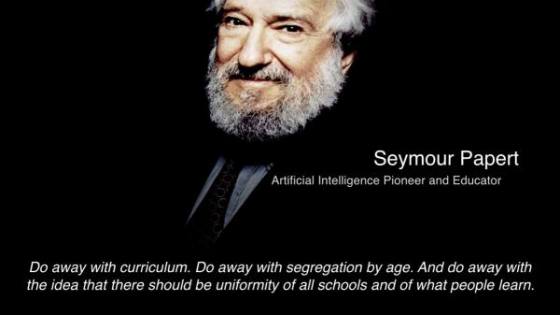When it comes to innovation, the experts, enablers, and visionaries at Les Tablettistes agreed on two things:
- It needs to happen and at a faster rate to address our most intractable problems
- Youth today are most likely to find solutions to these complex problems
The question is, then, HOW?
When I reflected on the messages from all of the sessions, the speakers spoke to a unified method to prepare students for a more innovative future.
1. Expose students to the world (for inspiration)
Instead of just reading books and regurgitating information, involve learners in real-world problems and allow them to discover with each other and external experts.
Je n’ai pas choisi les sciences, admet Rachel Brouwer. J’ai été inspiré par les problèmes qui m’ont été présentés #Tablettistes pic.twitter.com/koI378uvsw
Rachel Brouwer, youngest panelist at 14 years old, says of her solar water pasteurization system: “I did not choose science. I was inspired by the problems that have been presented to me.”
.@lisegaluga : oubliez les présentations PowerPoint, demandez plutôt à vos élèves de créer leurs propres scénarios. #edtech #Tablettistes pic.twitter.com/uHPde8x8dY
Lise Galuga, Google for Education Certified Innovator and Trainer and a provincial technology consultant in support of provincial digital schools initiatives for Centre franco-ontarien de ressources pédagogiques (CFORP), says: “Forget PowerPoint presentations, ask your students to create their own scenarios.”
2. Give them the tools
In order to ensure that students have equal opportunities to solve these self-directed problems, the role of educators is to be guides on their journey. We need to ensure that the tools they need are there when they need them. This might include guiding principles such as the creative process. In many cases, it means making digital tools available. Technology can equalize opportunities, creating more inclusive access across learning styles, geographies and cultures.
“We need to be able to tailor the learning experience for different brain types” which #VR can help with – Ernest Webb #Tablettistes #edtech pic.twitter.com/WQpKqwgH57
— Les Tablettistes (@Tablettistes) January 6, 2017
.@GFerrabee: Creativity starts with an abstract idea & a process—we can teach process to cultivate people’s creativity #edtech #Tablettistes pic.twitter.com/8aIzUPz9V7
— Les Tablettistes (@Tablettistes) January 6, 2017
3. Get out of the way
It’s not about making people curious, “it’s about how to get out of the way and stop killing the curiosity” – @HamoonPraxis #Tablettistes pic.twitter.com/PisvAc5yTn
— Les Tablettistes (@Tablettistes) January 6, 2017
Who can decide what skills others need to learn to solve the problems of the future? It is at the intersection of collaborations using our heads, hearts and hands in which we will find solutions.
Instead, education has been about how to pass — or fail — a test. “In music and sports, ‘failure’ is called practice, but in our education system, there isn’t a word for it.” – @ilanabenari
As global education and learning thought leader Graham Brown-Martin says, standardized testing may not be supporting the innovative future we want to see. Drawing from his inspiration, the late Seymour Papert, Brown-Martin echoed other experts of the day in his belief that we need to find ways to ensure that the next generation can learn what they need to learn with no barriers.


